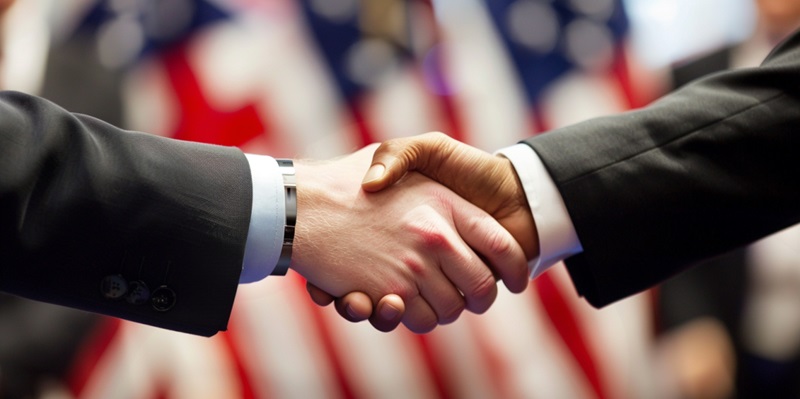As digital technology evolves, the US and the UK have taken a vital step to control AI’s future by signing a Memorandum of Understanding between their AI safety institutes. This pact is a testament to their commitment to ensuring AI development remains in line with safety standards and ethical governance. The collaboration will focus on regulatory frameworks and managing risks associated with AI, setting a precedent for international policy on AI usage. The effects of this agreement are poised to extend beyond their borders, urging other nations to consider similar safeguards in the AI domain. This move marks a proactive approach to navigating the complexities of AI as it becomes more embedded in our daily lives. This initiative is expected to shape the way we manage AI globally, fostering security and responsible innovation.
Strengthening AI Governance Through Bilateral Collaboration
The US-UK partnership comes hot on the heels of the AI Safety Summit, where global AI leaders like OpenAI and Google DeepMind pledged support for a framework allowing independent safety institutes to review new AI models before they hit the market. This Memorandum of Understanding is more than just a handshake; it is a concrete implementation of those commitments. By pooling their scientific knowledge, exchanging personnel, and conducting joint testing exercises, the US and UK are creating a robust mechanism for AI evaluation. This not only raises the bar for AI safety but also sets a precedent for international governance in this domain.
The importance of this collaboration cannot be understated. It acknowledges that no single nation can tackle the complexities of AI alone and that international cooperation is vital. The shared expertise and resources will encourage the development of standardized practices for AI safety. Moreover, this alliance might just be the catalyst needed for broader global cooperation on AI governance, as other countries consider aligning their own strategies with the pioneering efforts of the US and UK.
Addressing AI Threats with Shared Objectives
The specter of AI as a threat to humanity is not new, with prominent figures like Elon Musk drawing attention to the potential dangers. The US-UK partnership is a meaningful step in transforming concern into action. By working together to implement rigorous testing and evaluation processes for new AI models, the two nations are looking to proactively prevent harmful implications even before these technologies are deployed. This is a clear recognition that AI safety is a shared global responsibility that goes beyond any single nation’s borders.
These endeavors are about more than just preventing harm; they are about shaping a future where AI acts as a force for good. By aligning on objectives and sharing a vision for the safe development of AI, the US and UK are not only protecting their citizens but also setting ethical standards that could guide the global community. Through this partnership, both nations exemplify how collaboration can lead to greater preparedness in facing AI’s uncertain future.
Investing in AI Safety and Regulation
Monetary investment in AI safety and regulation is a testament to the gravity with which the US and UK treat this issue. The UK’s commitment of over £100 million demonstrates that safeguarding AI’s integration into society is both a priority and a substantial economic undertaking. This investment goes beyond the conceptual; it’s about equipping regulators with the skills and resources necessary to manage the AI-related challenges that will undoubtedly arise across various sectors.
The decision to enhance the capabilities of sector-specific regulators, rather than creating a centralized AI regulatory body, reflects a judicious approach to governance. By doing so, the partnership leverages existing frameworks and expertise, ensuring a more seamless integration of AI oversight within current regulatory landscapes. This approach may serve as a blueprint for other nations looking to strengthen their own AI governance mechanisms without overhauling their existing institutional structures.
A Model for Global Cooperation in AI Safety
As countries across the world grapple with the rapid advancement of AI, the US-UK alliance stands as a beacon of responsible stewardship. It represents a shared commitment to a future that maximizes AI’s positive potential while curtailing its risks. Equally important, this partnership serves as an inspirational model for an international consensus on AI safety, promoting a balance between benefiting from these technologies and mitigating ethical concerns.
This bilateral effort lays a foundation that others might build upon, potentially leading to a unified global framework of AI governance. As the world watches, the effectiveness of the US-UK collaboration will be scrutinized and potentially emulated, making it a pivotal point in the history of AI regulation. Together, these nations affirm a resolute approach to confront AI’s challenges actively and cooperatively, thus paving the way for the responsible development and deployment of AI across the globe.

